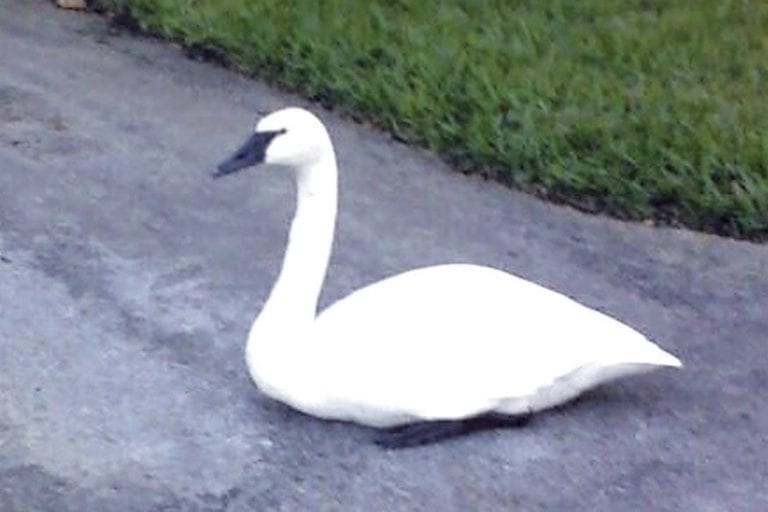
The pond at Walden Lake transformed into swan lake after an elusive white bird made its home there for more than a year.
But, it mysteriously vanished several months ago.
Residents are left wondering where the majestic swan has gone. Some heard rumors that it was hit on Interstate 4. Others heard it was shot and found in a median in Walden Lake.
“It had been there ever since I moved in 18 months ago,” April Robbins-Beppler said. “It’s really sad.”
Robbins-Beppler lives in Fairway Village, and her yard backs toward the pond. She said it looked like a trumpeter swan, one of the largest breeds. In fact, she even named nicknamed it “Swanzilla.”
Swanzilla used to eat her neighbor’s flowers, but Robbins-Beppler and her neighbors enjoyed his company regardless, feeding him bread on the banks.
When Swanzilla first came to the pond, residents were thrilled. The Walden Lake Community Association even printed something about the “new resident” in its newsletter. The WLCA joked it didn’t know whether to make the due letter out to Mr. or Mrs. Swan.
Later, another resident suggested the WLCA get a companion for the new neighbor. But upon further investigation, it opted not to pursue a mate.
Swans mate with the same partner for years and often for life. Occasionally, if his mate dies, a male Trumpeter swan may not pair again for the rest of his life. The Walden Lake swan was thought to be a male.
After a mate dies, the male often does not stay in the same location the monogamous pair had lived.
But, Swanzilla ended up flying away, regardless.
“We started to get phone calls about the missing swan,” Bette Guarino, of the WLCA said. “We heard rumors. None are confirmed.
“The swan is gone,” she said.
Trumpeter swans are a migratory breed. They like calm waters without much human interference. Although Swanzilla’s absence is as mysterious as his arrival, it’s quite possible he flew away for a quieter pond with a potential mate.
Contact Amber Jurgensen at ajurgensen@plantcityobserver.com.
FAST FACTS
• Trumpeter swans have been known to live 29 years in the wild.
• Trumpeter swans feed on submerged aquatic vegetation and on occasion aquatic invertebrates.
• Every year. adult swans go through a flightless period in which they molt all their feathers at once, thus making them flightless for a one- to two-month period. This typically occurs during the warmest months, July and August.
• Trumpeter swans can fly between 40 to 80 mph.
• Adult male swans can vary from 21 to 32 pounds but typically weigh 26 to 30 pounds.
Source: National Park Service
